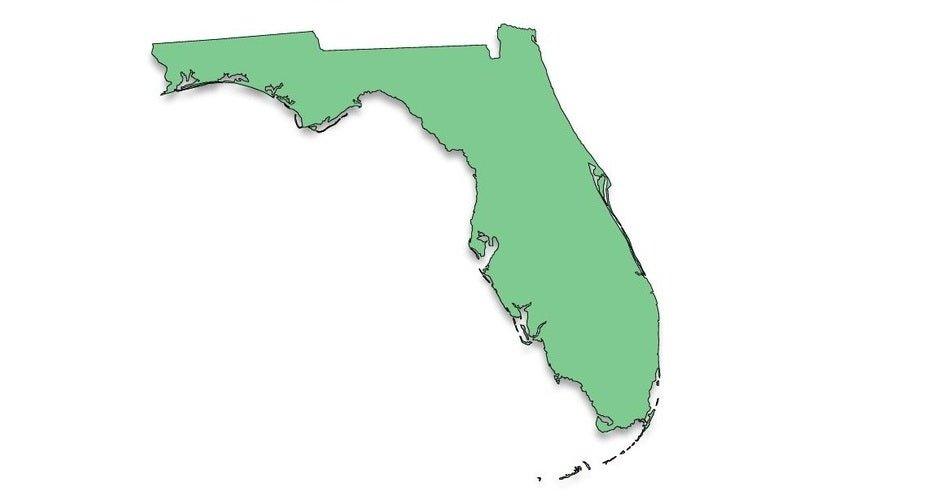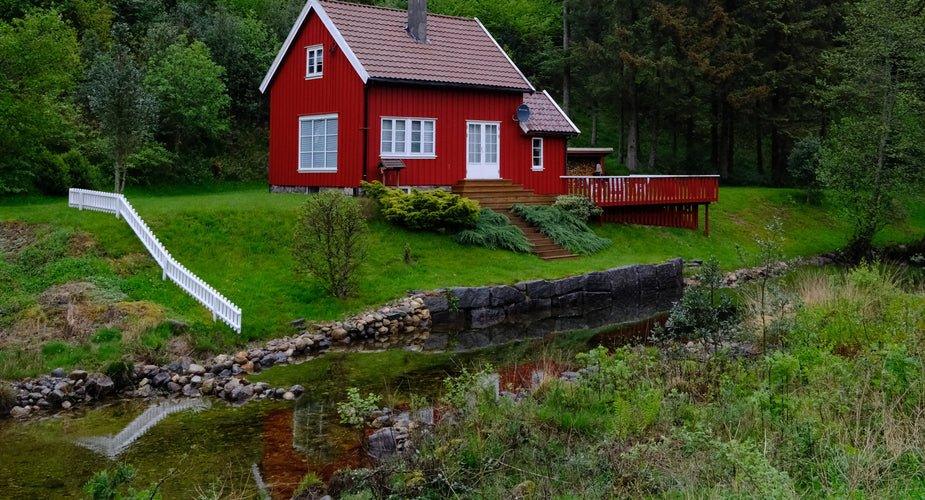The tiny houses on wheels concept was born more than 20 years ago and the interest never stopped growing even up to this day. This off-grid way of life comes with its own pros and cons including finding the best power source for this humble abode. The solar powered generator is one of the best options out there that many homeowners consider as the perfect solution for their energy needs.
Tiny House on Wheels: A Brief History
Tiny house on wheels was a concept brought to life by Jay Shafer way back in the year 2000. He began building the very first tiny house on wheels in 1999 and started living in it in 2000. The 90 square feet dwelling gained so much attention that Shafer started receiving commission requests from so many people who took interest in trying this type of tiny house.
The concept of tiny house on wheels spread like wildfire that in 2002, the Small House Society was born. Founded by Shafer, the organization’s advocacy is to promote smaller housing alternatives that are more affordable and eco-friendly. This should not come as something surprising though since living in a tiny house on wheels has a lot of perks and people want to experience those good things.
So what are these perks, you say. Continue reading to find out the answer.
Perks of Living in a Tiny House on Wheels
- Lower Expenses - The cost of a tiny house is way less than that of a regular sized dwelling unit, making it a huge money saver for a lot of people.
- Lower Energy Consumption - Living in a tiny house means needing fewer electric appliances to keep the household up and running. Not only that, a lot of tiny houses are even designed to be self-sufficient so fuel, water and waste disposal are rigorously managed.
- Low Maintenance - Another very obvious perk of living in a tiny house is that it requires less effort to maintain the humble abode. Having a small floor area would mean less space to clean, less chores to accomplish.
- No Mortgage Duties - Freedom from mortgage is another big reason why tiny house owners chose to live in their humble tiny abode. Not having to worry about paying mortgage plus interest definitely makes living in a tiny house attractive to many.
- Freedom of Movement - Tiny houses on wheels, together with RVs, park mobiles and skoolies offer great mobility options to those who like to move and travel across the country without leaving their homes behind.
- More Environment Friendly - It simply makes sense that living in a tiny house is more environment friendly because it requires less energy to run the household, not to mention the use of alternative and sustainable power sources such as solar panels to keep everything running smoothly.
Factors to Consider Before Buying a Tiny House on Wheels
Living in a tiny houses on wheels bring freedom and simplicity, offering compact, efficient living spaces perfect for sustainable, mobile lifestyles. Ideal for those seeking minimalism and adventure on the go. surely comes with a lot of advantages but before jumping on the bandwagon, make sure that you have checked all the important factors to consider before sealing the deal. Below are some pointers that can serve as your guide if you are in the process of purchasing your own tiny house.
Size - A tiny house on wheels has a well, tiny livable area so make sure that before buying one, find out how much space you would need or prefer to be able to live comfortably in this type of dwelling. A typical tiny house on wheels measures 8.5 by 40 by 13.5 feet which makes up a total of about 320 square feet.
Brand New or Pre-Owned - Once you have determined your budget allotment for your tiny house on wheels, that will help narrow down your choices and see if it is better to buy a brand new unit or a pre-owned one. Although the initial cost is higher, buying a brand new one will get rid of unnecessary repairs and renovations that usually come along in a pre-owned unit. However, with thorough research and unit inspection, buying a well-maintained pre-owned unit can save you a lot of money. Go ahead and weigh the pros and cons of each side to help choose the right one for you.
Utility Availability and Cost - Just like any dwelling unit, identify what and where you are going to get utility services such as electricity, water and sewage for your tiny house on wheels. Fortunately, tiny houses on wheels are designed to be more energy efficient which is good news for your savings. You can install solar panels, wind turbines, a rainwater system and composting toilets to help save on utilities without sacrificing your comfort.
Understanding Your Layout - Knowing where to find what in your tiny home is crucial because that will come in handy if ever a problem occurs in the future. Electrical wiring, pipe layout and power sockets are just some of the most basic things you need to know about your tiny house. You can ask the builder (or the owner if pre-owned) for assistance. Once you have a better idea of the blueprint of a tiny house, it will help you decide on whether that is a good find or a deal breaker.
Off-Grid Way of Life
Since tiny houses on wheels were designed to be mobile, the majority of their dwellers rely mainly on off-grid energy sources such as a solar powered generator.
Once set-up right, there is no turning back from the off-grid way of life. Aside from the huge savings you’ll get from not having to pay for any more utility bills, you will also not have to worry about power outages or running out of backup power because solar powered generators get their energy from the sun, which is not only clean and renewable but also unlimited and self-sustainable.
One of the most trusted solar powered generator suppliers in the market these days is Nature’s Generator. They offer three types of solar gen sets that can be used right away but what makes them better is that all three types can be expanded should you want to add more power in your chosen system. Let’s take a closer look at each of the solar powered generator variants of Nature’s Generator to get a better understanding of their capacity and their best use.
Don’t know where to start? Nature’s Generator 1800W is a great option if you are looking for a basic backup power generator for your tiny house. With a maximum output power of 1800W, this solar power system can power appliances for several hours or more (if you add a power pod). Charging is easy since you may do it in three ways: via an AC outlet or a solar panel or a wind turbine (sold separately). It comes with three 120V household AC outlets and 2 USB ports and has a built-in 600V / 175 Amp expansion port for power pods. That is great news if you’d like to upgrade the power capacity of your system in the future. Finally, for ease of transport, it also comes with a heavy duty cart so you can take it anywhere and move it from one place to another with no issues.
Now, if you want to start off with more power capacity, then Nature’s Generator Elite is the way to go. This variant provides 3600W worth of power which is twice the capacity of its Gold variant. It also has three 120V household AC outlets, 2 USB ports, an expansion port for power pods and can be charged in three ways. You may upgrade it too by adding more power pods and can move it around your house using the universal heavy duty car that comes along with it.
Last but certainly not the least, if you are looking for an off-grid solar power system that can provide your tiny house one wheel’s energy requirements, Nature’s Generator Powerhouse is what you need (feel free to contact us to guide you on identifying your energy requirements). Just from the name itself, you can tell that this power giant can single-handedly fulfill your tiny house power requirements. Armed with a whopping 7200W maximum power capacity with a split phase feature, it can power multiple heavily powered appliances such as an air conditioner and a refrigerator at the same time. It comes with three household AC outlets (2 120V and 1 240V), four USB ports, one 350A expansion port and one 12V DC port. And just like the other variants, it’s chargeable in three ways: AC outlet, solar panel and wind turbine. Oh, and let’s not forget that this is also expandable and upgradeable - go ahead and add more solar panels, wind turbines, power pods in it if you want.
Kindly contact us here should you have any more questions or would like to request for a free quote.
Final Thoughts
The increasing number of tiny house on wheels owners tells us that more and more people are acknowledging the fact that there is another way of life where you can live with less - less material things, less financial debt, less energy consumption, less carbon footprint - without sacrificing your quality of life.
Together with this is the growing demand for solar powered systems which means that it is also possible to live off the grid and make use of the power of the sun - clean, renewable, easy to harness, unlimited and environment friendly.
* We want to give credit where credit is due. Professional writer, Ann Mathew, contributed research and content to this blog titled: Tiny Houses on Wheels Thank you, Ann, for your contributions!













